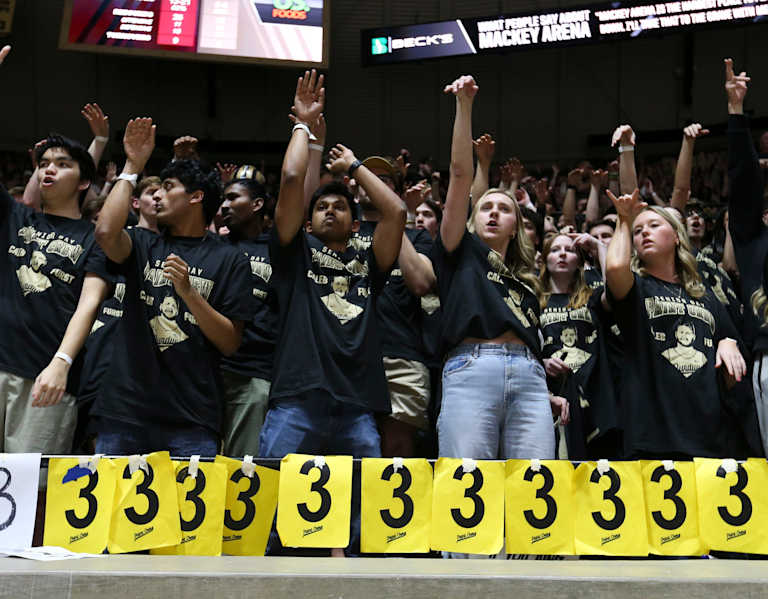I wasn’t sold on the era of foldable smartphones until I tried the Pixel Fold. For one, we get a fairly limited selection of folding phones to choose from in the US compared to China. And the cramped, too-narrow outer display of Samsung’s Galaxy Z Fold series has never worked for my large hands. So Google grabbed my interest immediately when it introduced a squat, passport-shaped folding phone.
Technology
Google’s Pixel Fold one year later: I can’t wait for the sequel
/cdn.vox-cdn.com/uploads/chorus_asset/file/25555597/DSCF7455.jpg)
I’ve used Pixels for years, so I’m well acquainted with Google’s strengths and weaknesses. The software is clean, you get some genuinely handy Pixel-only features (the Recorder app is a blessing in my line of work), and the camera performance is unbeatable — at least for still photography. But on the flip side, performance never measures up to Qualcomm’s latest Snapdragon chips, the devices tend to run a little warm, and there are sometimes odd hardware quirks. (Did you know that every Pixel 8 and 8 Pro has tiny bumps under the display only visible in just the right light? Now you do.)
Going into the Pixel Fold, I knew there would be additional tradeoffs. Foldable phones are heavy. Their cameras don’t measure up to the best traditional phones. And several years into this form factor, they often remain wildly expensive. Samsung and Motorola offer lower-priced flip versions, but no such luck if you’re a Pixel fan.
However, it took practically no time at all for the Pixel Fold to overcome those collective downsides. It’s far from a perfect gadget, but this is a case where the whole is greater than the sum of its parts. I’ve grown to like a lot about the first-gen Pixel Fold, but there are also some nagging frustrations that I hope to see rectified in the upcoming Pixel 9 Pro Fold.
It’s easy to ignore the bigger screen
The first thing I learned was that when you’ve got an adequate phone on the outside, you won’t open the inner display as frequently as you might expect — at least once the honeymoon phase wears off. The Fold’s exterior screen is perfectly usable for most of what I do with a smartphone. I usually unfold it when I want to watch YouTube, Netflix, or check the news with The New York Times app. Sure, I’ve multitasked with two apps at once on occasion — and Google has made that workflow easier with software updates — but it’s not a common scenario. I’m still mostly using the large canvas to focus on one thing a a time, albeit with far greater immersion.
This thing desperately needs a brightness boost
From day one, my primary gripe with the Pixel Fold has always been its display brightness — or lack thereof. Only a few months after its release last year, the $1,700 device was outshined by the significantly more affordable Pixel 8 series and Google’s new Actua / Super Actua displays. They get extremely bright and are no trouble to use outdoors. With the Fold, I’ve constantly got the brightness slider up over 80 percent, which doesn’t do its battery life any favors. It can be a struggle to see this phone when the sun is shining, and the very reflective inner screen only makes things worse.
If there’s one weakness I’m relatively confident Google is going to fix the second time around, it’s this lack of pop. All indications are that the company will bring its latest (and brightest) display tech to its second-gen foldable.
The other key improvement I hope to see is a lighter frame. The Pixel Fold is one seriously hefty phone, even for me — a 6’1” man with big hands — and can get taxing to hold over time.
The battery life has gotten me by
I wasn’t expecting miracles from the Pixel Fold’s battery endurance. Is it fair to want that from any foldable? Plus, Google’s Tensor chips have never been known for efficiency. But even on days when the large display barely got any use, the Fold did… fine. It wasn’t always a lock that there would be much juice remaining when I got home after a long day, but the phone almost always made it. Like other Pixels, the Fold can sometimes charge at a snail’s pace when you’re actively using it while plugged in. Overall, its stamina is trounced by the more conventional Pixel 8 Pro, but that’s to be expected when you’re pitting two screens against one.
Many apps aren’t optimized for the wide display
The Pixel 9 Pro Fold is rumored to be going in the direction of the OnePlus Open, with a taller design. You’ll basically be getting a regular phone on the outside. That means the aspect ratio of the inner display will also be changing, which is a good thing since I found that many apps had black bars on both sides when I held the Fold open. This is Android, so you really can’t count on developers quickly embracing an individual device. Google eventually added an option to force apps to go full-screen in software, but the new dimensions of the 9 Pro Fold should theoretically mean that more apps will do that by default.
Plenty of apps do play nice with the Fold. Editing photos from my mirrorless camera in Adobe Lightroom has been a great experience from the jump — even if the device sometimes gets a little warm while doing so. If I’m not traveling with my iPad, this is the next best thing for making some adjustments on the move.
Durability, camera, speakers, etc.
I’ve used two Fold review units over the last year, and neither of them has broken or had any catastrophic screen problems. But not everyone has been so lucky, and having any foldable repaired or replaced under warranty can be an ordeal. The glossy camera bar inevitably shows wear and tear, and scratches on the soft inner display are unavoidable. But they’re also easy to forget about when the screen is lit up — as is the crease.
The speakers on this $1,700 phone are decidedly mid. They’re blown away by Apple’s iPhone 15 Pro Max, the Samsung Galaxy S24 Ultra, and Google’s own Pixel 8 Pro. Give me something with a little more oomph, Google. Please!
The Pixel Fold’s camera(s) do the job. They’re reliable, as Allison wrote in her review. But they’re nothing to write home about, either. Google’s computational photography magic can help pretty up your shots, but you’re dealing with a smaller sensor than what’s in ordinary flagship phones, and software can’t fully compensate for that.
Google is set to announce the Pixel 9 Pro Fold (and a lot more) at its August 13th event. The first Pixel Fold got enough right to make me a believer in foldables. Now the company just needs to prove that it can take that potential and versatility to the next level — and hopefully the screen brightness, too.
Photography by Chris Welch / The Verge

Technology
Roblox: all the news about the popular social and gaming platform

Roblox is a massive app — as of September 2023, Roblox says it has more than 65 million daily active users — and it’s becoming an increasingly interesting platform to watch amid growing competition from social and metaverse platforms like Epic Games’ Fortnite and Meta’s Horizon Worlds.
Here’s all of our coverage of Roblox.
Technology
Tax scam alert: How to protect yourself and your tax refund

Tax season is upon us, and while many of you are preparing to file your returns, it’s crucial to be aware of the ever-evolving world of tax scams.
This year, it’s more important than ever to stay informed and on your guard.
New research by McAfee, a cybersecurity company, has shed light on how common these scams are and what kind of scams they are, revealing some surprising trends and highlighting the importance of protecting yourself.
STAY PROTECTED & INFORMED! GET SECURITY ALERTS & EXPERT TECH TIPS – SIGN UP FOR KURT’S THE CYBERGUY REPORT NOW
Scam written on tax forms (Kurt “CyberGuy” Knutsson)
How Americans file and pay taxes in 2025
Before diving into the scams, let’s look at how people are handling their taxes these days. The McAfee research indicates that:
- A little more than half of Americans (53%) are e-filers, taking the online route through tax software or IRS Free File
- Nearly a third (31%) rely on professional tax preparers
- The vast majority (60%) handle payments and refunds electronically
- A large portion (52%) still receive their W-2s and 1099s the old-fashioned way: in the mail
- While others (31%) log in to payroll service portals (e.g., ADP, Workday, Paychex) to retrieve them

Illustration of tax prep tools (Kurt “CyberGuy” Knutsson)
BEST ANTIVIRUS FOR MAC, PC, IPHONES AND ANDROIDS – CYBERGUY PICKS
The unsettling reality of tax scams
The reality is that tax scams are more prevalent than we might prefer to acknowledge. Nearly one in four individuals (23%) say they know someone or have personally fallen victim to such scams. Let’s break down who’s being affected and how.
- Young adults (18-24): This group is, surprisingly, the most likely to fall victim to scams. They are also most likely to have their information compromised via Instagram and WhatsApp.
- Older adults (65-74): On the other end of the spectrum, older adults are the least likely to have encountered tax scams.
- Gender differences: Young men are significantly more likely to lose money to scams than young women.
And when people do lose money, the amounts can be substantial:
- 81% lost over $500
- 51% lost over $1,000
- A sobering 5% lost over $10,000

Scam written on a tablet surrounded by cash (Kurt “CyberGuy” Knutsson)
THE HIDDEN COSTS OF FREE APPS: YOUR PERSONAL INFORMATION
Demands and threats: What scammers want
Scammers use a variety of tactics to trick people into giving up their money or personal information. The research shows that many people have received suspicious messages claiming to be from the IRS or a state tax authority via:
- Phone calls (30%)
- Text messages (27%)
- Facebook/Facebook Messenger (5%)
- WhatsApp (3%)
- Instagram/Instagram Direct Messages (2%)
These messages often include demands for:
- Social Security numbers or tax identification numbers (40%)
- Immediate payment of back taxes (27%)
- Bank account numbers (18%)
- Credit/debit card information (17%)
It’s important to note that the IRS generally doesn’t initiate contact via phone, text or social media to demand immediate payment.

A woman preparing her taxes (Kurt “CyberGuy” Knutsson)
THE TAXING TRUTH: A STATE-BY-STATE ANALYSIS OF TAX TIME TRICKERY
Who’s being targeted by which scam?
Different age groups are targeted with different scams. Here’s the breakdown.
- Older adults (65-74): This group is heavily targeted by payment scams, such as demands for back taxes or fake tax refund schemes.
- Middle-aged (35-54): This group is targeted by a mix of identity theft and payment scams, like requests for Social Security numbers or demands for back tax payments.
- Younger adults (18-24): Scammers often seek personal information from this group, like birth dates and bank account numbers.

A woman working on her taxes (Kurt “CyberGuy” Knutsson)
The cost of falling for scams
Many people have received emails or texts about their “tax refund” or “tax refund e-statement” with a link. A large portion of people (39%) clicked on these links. It’s definitely alarming how many people end up falling for these scams.
WHAT IS ARTIFICIAL INTELLIGENCE (AI)?
Almost 40% of people who get a scam message or call actually send the scammer money. Younger adults are particularly vulnerable; more than half of 18- to 24-year-olds know someone who’s paid up. When people click those tempting links about tax refunds or e-statements, they’re playing a risky game: Almost 40% of people clicked on that email or text message, and that’s where scammers can really get you.

A woman working on her taxes (Kurt “CyberGuy” Knutsson)
AI’s role in the future of tax scams
Looking ahead, AI is making scams even scarier. A whopping 87% of people are worried about AI’s role in creating realistic tax scams, but only 40% feel confident they could spot a deepfake from the IRS. As a result, many people (41%) are second-guessing real tax communications. In fact, more than half of people say the tax scam messages they’ve received this year are more sophisticated or realistic than last year. It’s no wonder that most people are concerned about tax fraud this season.
“Tax scammers are getting smarter, and many are using AI to make their tricks more convincing than ever, just when people are feeling the most pressure to file quickly,” said Abhishek Karnik, head of threat research at McAfee. “While not every scam uses AI, we predict a rise in more sophisticated, social engineering-focused tax fraud tactics as access to AI tools increases, including fraudulent emails, phone calls that use AI-generated audio and fake tax prep websites, making it easy for even the savviest filers to slip up.”
How to protect yourself from tax scams
OK, so the scam landscape looks pretty grim. What can you do to stay safe? Here are some practical steps to protect yourself.
1. Be skeptical of unsolicited contact: Remember that the IRS will never contact you via phone, email, text or social media to demand immediate payment or request personal information.
2. Avoid clicking suspicious links; use strong antivirus software: Do not click on links in emails or texts from unknown senders. The best way to safeguard yourself from malicious links that install malware, potentially accessing your private information, is to have antivirus software installed on all your devices. This protection can also alert you to phishing emails and ransomware scams, keeping your personal information and digital assets safe. Get my picks for the best 2025 antivirus protection winners for your Windows, Mac, Android and iOS devices.
3. Guard your personal information: Protect your Social Security number, bank account details and other sensitive data carefully.
4. Create strong, unique passwords: Be sure to use strong passwords on financial and tax websites. Make sure each password is unique, especially for financial accounts. Get more details about my best expert-reviewed password managers of 2025 here.
5. Enable two-factor authentication: This adds an extra layer of security to your accounts that will prevent a hacker from getting into your accounts.
6. Invest in personal data removal services: These services monitor your personal information and alert you to potential fraud. While no service promises to remove all your data from the internet, having a removal service is great if you want to constantly monitor and automate the process of removing your information from hundreds of sites continuously over a longer period of time. Check out my top picks for data removal services here.
7. Don’t respond to texts/calls from unknown sources: Whatever you do, don’t respond to texts/calls from unknown sources whatsoever.
8. Trust your gut: If something feels off, it probably is. Verify information independently by contacting the IRS or your state tax authority directly.
SUBSCRIBE TO KURT’S YOUTUBE CHANNEL FOR QUICK VIDEO TIPS ON HOW TO WORK ALL OF YOUR TECH DEVICES
Kurt’s key takeaways
Tax season doesn’t have to be a stressful time filled with worry. By staying informed, being on your guard and taking simple steps to protect yourself, you can confidently navigate the tax landscape and avoid falling victim to these scams. Be skeptical, be careful and always remember that when it comes to your taxes, it’s always better to be safe than sorry.
Have you or someone you know been targeted by a tax scam? Let us know by writing us at Cyberguy.com/Contact.
For more of my tech tips and security alerts, subscribe to my free CyberGuy Report Newsletter by heading to Cyberguy.com/Newsletter.
Ask Kurt a question or let us know what stories you’d like us to cover.
Follow Kurt on his social channels:
Answers to the most-asked CyberGuy questions:
New from Kurt:
Copyright 2025 CyberGuy.com. All rights reserved.
Technology
Our first look at Apple’s sky blue MacBook Air

Aside from a new color, the M4 MacBook Air looks a whole lot like last year’s model. And we’ve got the hands-on experience and pictures to prove it.
Apple’s got five main updates for its refresh of the 13- and 15-inch MacBook Airs for 2025. First, it’s got a similar M4 chip to the base 14-inch MacBook Pro, though here it starts with a 10-core CPU and 8-core GPU. Also inherited from the MacBook Pros, the Airs now use the 12-megapixel Center Stage webcam that’s wider and can track you within the frame. And you can now (finally) use two external monitors and keep the lid open, essentially giving you a fancy triple-monitor setup with the lowly MacBook Air.
As for that new color option, sky blue, it replaces space gray. Starlight, silver, and midnight are still around from last year (and midnight is unchanged, so expect some fingerprint smudginess). The new blue is a very pale metallic finish. You could mistake it for a silver if you didn’t see them side-by-side. I think the best way I could describe it is 2003 Toyota Matrix blue. In other words, it’s nice but not blue enough. Apple should call it non-committal blue.
But the fifth thing that’s new for the MacBook Air, and likely the one many of us will care most about, is that it starts at a lower price. The 13-inch model starts at $999 while the 15-inch starts at $1,199. This is actually a return to form for the 13-inch, which used to start at that price before an increase during the M2 generation. The M4 Air may be an otherwise subtle chip-bump of an upgrade with a new bland-ish metallic finish, but $100 off makes all the difference.
In addition to our hands-on with the MacBook Air we also got our first look at the new Mac Studio duo, one with the M4 Max chip and one with a new, all-out M3 Ultra. The Studios don’t look any different, but the changes inside are pretty major for hardcore pros doing some heavy-duty creative work or local AI stuff.
Apple’s new Macs and iPads are due out next week and already up for order. Check out our smattering of photos.
Mac Studio M4 Max / M3 Ultra
Photography by Antonio G. Di Benedetto / The Verge
-

 Sports1 week ago
Sports1 week agoNHL trade board 7.0: The 4 Nations break is over, and things are about to get real
-

 News1 week ago
News1 week agoJustice Dept. Takes Broad View of Trump’s Jan. 6 Pardons
-

 World1 week ago
World1 week agoHamas says deal reached with Israel to release more than 600 Palestinians
-

 Science1 week ago
Science1 week agoKilling 166 million birds hasn’t helped poultry farmers stop H5N1. Is there a better way?
-

 News1 week ago
News1 week agoChristianity’s Decline in U.S. Appears to Have Halted, Major Study Shows
-

 World1 week ago
World1 week agoGermany's Merz ‘resolute and determined,' former EU chief Barroso says
-

 Technology1 week ago
Technology1 week agoMicrosoft makes Copilot Voice and Think Deeper free with unlimited use
-

 Politics1 week ago
Politics1 week agoSome Republicans Sharply Criticize Trump’s Embrace of Russia at the U.N.














